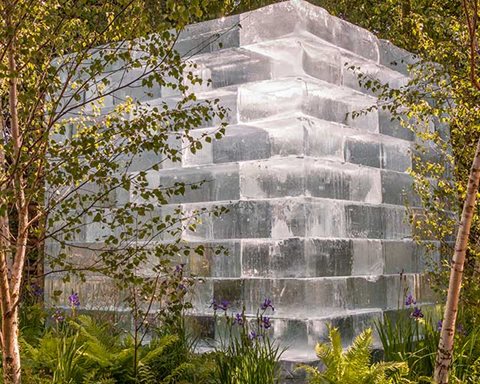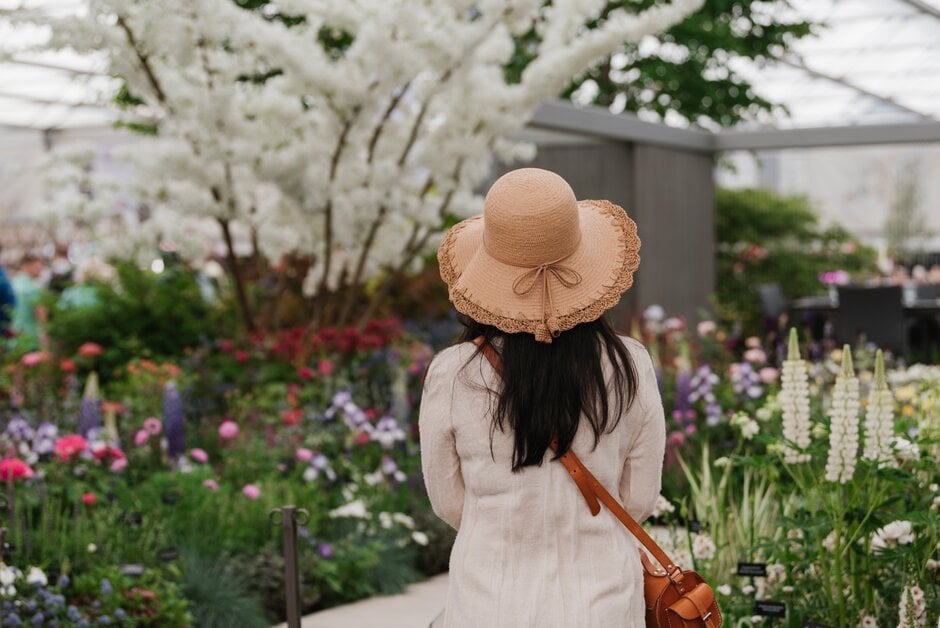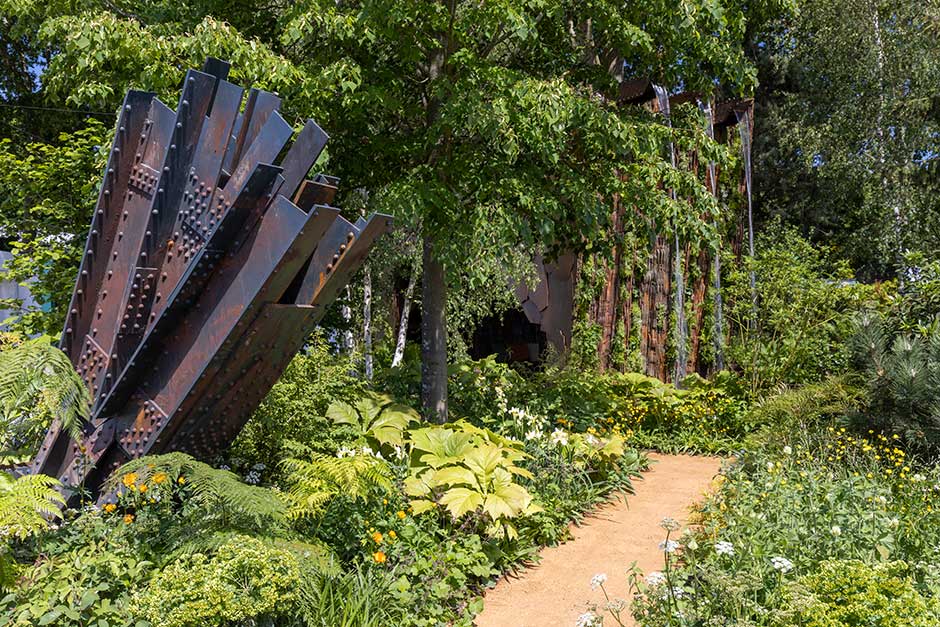Icy reminder of our changing climate
The melting of the Siberian permafrost is a terrifying indicator of a warming planet. But for one designer it provided inspiration for a striking Chelsea garden
Since 1994, 28 trillion tonnes of ice have disappeared from the Earth’s surface, and below the surface, the permanently frozen ground, known as permafrost, is melting. Permafrost holds a huge reservoir of carbon, and as the permafrost thaws, this trapped carbon is released.
Within the melting permafrost, however, scientists in Siberia have discovered and successfully germinated seeds buried more than 30,000 years ago.
The Plantman’s Ice Garden acted as a striking reminder of our changing climate, but was also a celebration of the botanical treasure trove found within the thawing permafrost.
From bringing in the ice on Friday night, to planting all the trees, shrubs and perennials, astonishingly the garden was completed in just over 24 hours. Most Chelsea gardens are built in over a week. The block is underpinned with 2m long ground screws, carefully avoiding the roots of nearby historic trees, with the overall block made up of a number of smaller ice blocks.
At the start of the show, the ice block looked crystal clear, like cut glass. As the ice melted, the block transformed – a continually changing, beautiful organic sculpture. Cracks appeared, and drips and rivulets flowed down its side, with the meltwater running into the soil to water the garden. If you listened carefully, you may have heard the sound of ice cracking.
Surrounding the ice cube, planting echoes the birch woodlands of Siberia; a verdant mix of foliage from bergenias, ferns and grass Melica nutans, with splashes of colour from foxgloves, Iris sibirica ‘Tropic Night’ and the delicate, white flower sprays of Brunnera macrophylla ‘Betty Bowring’.
Alongside the giant block, smaller cubes of ice gave a tantalising glimpse of seedheads, berries, fruits and pine cones encased within, reflecting the type of plant material that could be found in the melting permafrost.
Initial attempts to propagate the seeds failed, but scientists tried using immature seed from fruits also preserved in the permafrost and were successful, raising plants which are subtly different from the modern-day species which still grows in the colder areas of East Asia.
It had long been assumed that permafrost will melt gradually, starting at surface level and working its way down as the planet warms. But recent scientific research suggests it is thawing much faster. Deep pockets of ice are disappearing, causing the land to collapse and areas that were once largely forested becoming lakes over a matter of months rather than years.
John’s aim for The Plantman’s Ice Garden was to alert people to this
And, as John pointed out: “Every time we find a species, we find an opportunity for mankind.”


